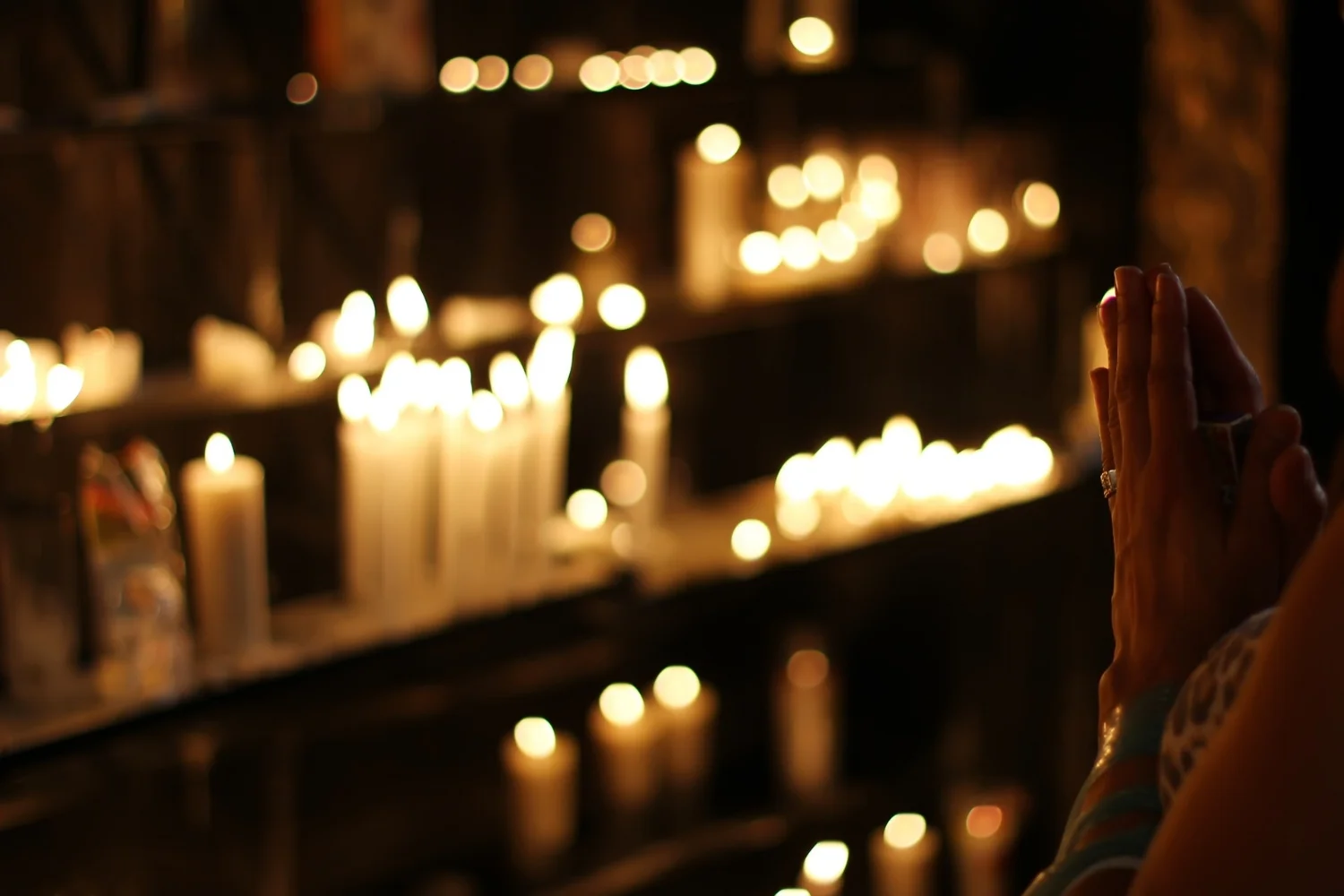The Catholic Communities of Our Lady of Perpetual and Saint Agnes Church
in Atlantic Highlands and Highlands, New Jersey.
Saint Agnes
A Colorful Past – A Glowing Future (from St. Agnes book circa 1965) Parish History – First 100 years
Atlantic Highlands is a community with rich and colorful traditions. It was on September 4, 1609 that the first European set foot on the soil of New Jersey at Atlantic Highlands. Our first visitors were crewmen of the Henry Hudson’s “Half Moon.”
At this time Atlantic Highlands was inhabited primarily by three tribes of Indians. With the ascendancy of the British to power in the New World, Englishmen eventually came to the area to purchase land from the Indians.
During the Revolutionary War period the Atlantic Highlands area was the scene of many notable incidents. In November, 1776, 38 Hessian battalions escaped from the Continental forces by boarding ships anchored in the Highlands.
The first traces of Catholicism in Atlantic Highlands date to the middle of the 19th Century. Both Father O’Connor and Father Fax (founder of our parish) are mentioned in early historical records of our community.
During the 19th Century Atlantic Highlands found itself noted for a variety of features — the twin light house towers erected for the safety of shipping, occasional ship building, the building of the Atlantic Pavilion (hotel), the installation of a telegraph station, and the beginning of Atlantic Highland’s era as a famous seaside resort.
Probably no community in New Jersey, along the entire Atlantic Seacoast, offered the ideal setting of Atlantic Highlands as a tourist resort — its advantages included attractive sloping heights, short beaches, rich soil which allowed grass and greenery to grow to the water’s edge, and, of course its proximity to large population centers. In the Spring of 1879 our community’s tidewater wharf was opened, the Bay View Transportation Company purchased the steamer “Thomas Collier”, and an era was begun. It began slowly, however, as most of the transportation company’s early revenue came from commercial shipping.
Within a matter of years steamships regularly docked at our wharf, bringing with them tourists and visitors, opening whole new areas of economic opportunity. In 1887, the town of Atlantic Highlands was officially organized.
In the decades since the 1880’s, Atlantic Highlands has continued to grow and flourish. Many changes have been made in the face of the community — the tourist resort industry has fallen off, older factories have been replaced by others, our people are largely “commuters” rather than people employed in their home town.
But with all of the changes brought by the years, one factor has remained constant — Atlantic Highlands has continued to grow and prosper. The future of our home town has never looked brighter — and the people of the Saint Agnes Parish share in the optimistic view of the future.
Our Lady of Perpetual Help
In 1863, Rev. Thomas M. Killeen, pastor of St. James in Red Bank, celebrated Highland’s first mass in a private home. Priests from Red Bank continued to administer to the community until 1879, when Rev. John J. O’Connor took up residence in Highlands. Father O’Connor assumed the pastorate of St. Mary’s Parish, which then consisted of New Monmouth and Highlands. In 1883, when Father O’Connor moved nearer to St. Mary’s Church in New Monmouth, Rev. John H. Fox, pastor of Holy Cross in Rumson, took responsibility for the Catholics of Highlands. In 1888 Father Fox built Highland’s first church. Rev. Thomas Roche, pastor of St. Agnes in Atlantic Highlands, took charge of Highlands in 1891.
Our Lady of Perpetual Help’s first pastor, Rev. John T. Sweeney, arrived in 1898, thus establishing an independent parish. Father Sweeney constructed a parish hall and the present rectory in 1901. Rev. Thomas Kearns completed a larger church by 1932. In 1951, Rev. Joseph J. Donnelly started a school in the basement of the church. A building for the Sisters of St. Francis from Stella Niagara, New York, was purchased in 1951. The present, more convenient convent was purchased and renovated in 1957. Rev. James A. Thompson constructed a school building in 1963, and about 1978, the Franciscan Missionary Sisters of the Infant Jesus from Woodbury assumed the teaching duties of the school.
In 1997 Rev. John M. Dobrosky purchased the house on the corner of Miller and Navesink Avenue, which is now known as the St. Jude Thrift Shop. The Thrift Shop is staffed by volunteers of the parish.


